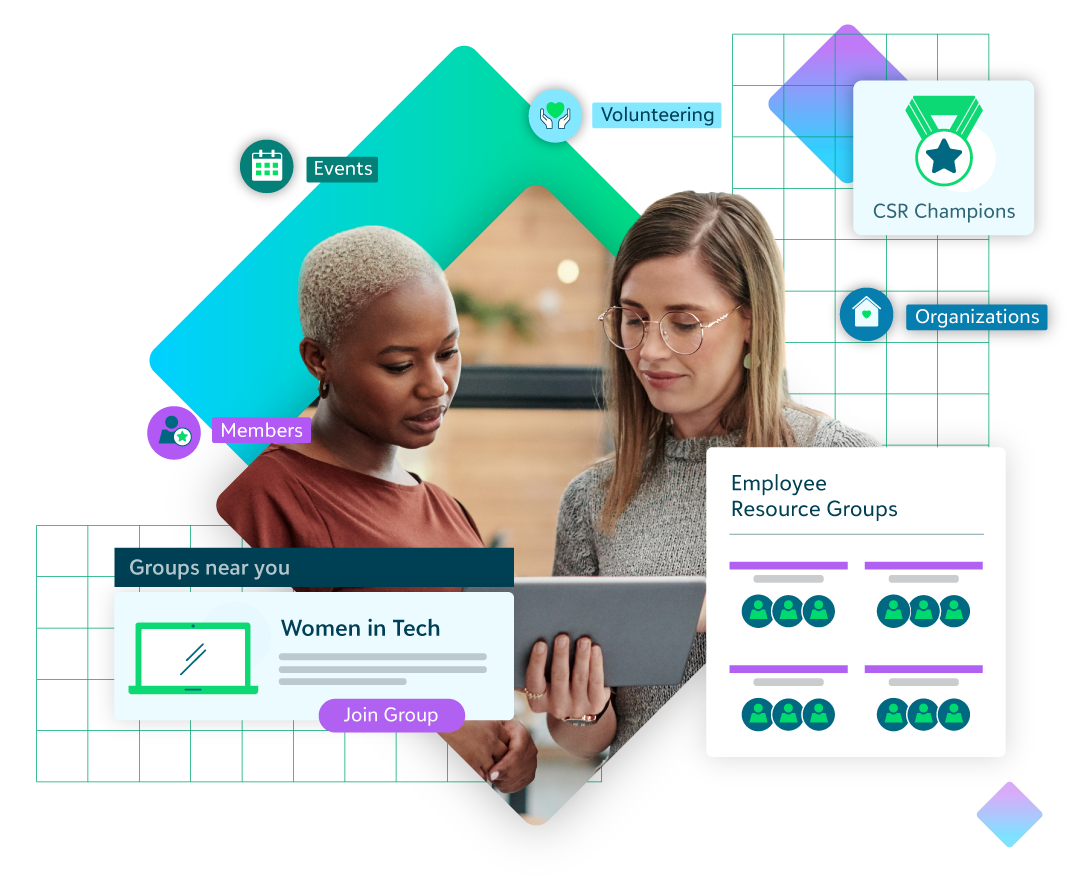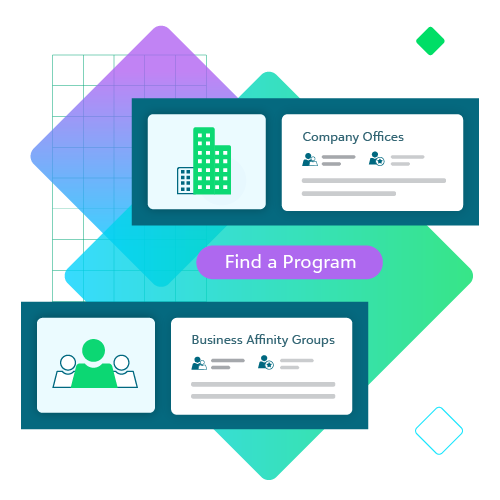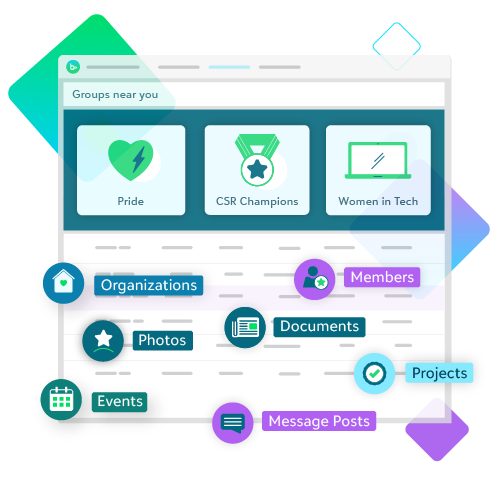



Scale Your Groups Programs With Complimentary Functionality Through CSRconnect
Increase Employee Participation
Keep employees engaged in your give-back initiatives by creating a centralized place for them to engage with Groups, Volunteering, and Giving.
Promote A Connected Culture
Empower employees to connect with each other.
Lighten
Your Workload
Powerful management tools make it easy for admins and group leaders alike to manage participation and communications.
Get Groups Functionality for Free and Boost Employee Engagement
Groups is a standout feature that elevates CSRconnect beyond basic employee giving and volunteering.
Our Groups feature is highly configurable, offering a unique space for employees to collaborate on various initiatives both within the community and the company. YourCause clients can leverage Virtual Groups to:
- Connect employees to resource groups based on location, interests, or causes.
- Integrate workplace belonging and Health & Wellness initiatives seamlessly.
- Tie Groups to causes they care about
- Streamline resources and collaboration for CSR Coordinators and Ambassadors, making their efforts more effective and efficient.pro

Promote multiple programs
Provide multiple ways for employee to connect and engage. Our functionality is flexible and allows you to manage multiple programs with privacy controls in mind.
- From affinity programs to host groups like Working Parents or Book Clubs, or programs geared for inclusion like Women in Tech or Pride, create multiple spaces for employees to explore
- Leverage privacy settings and location-based features to control what Groups employees can see and request to join
- Group members can also elect personal privacy settings, and choose if they want to be shown as part of the Group

Powerful Admin Functionality
Maintain oversight as a platform admin and reduce your workload with empowering Group leader functionality.
- Communication tools empower Group leaders to keep members engaged and informed, and members can elect to receive communications
- Document Storage, Message Boards, and Photo Sharing give group members a centralized place to stay organized and engage with each other
- Report on engagement with holistic Groups reporting and the ability to dive into specific Programs and Groups within them

Explore how YourCause solutions can help you create a purpose-driven culture
Building a Culture of Impact With Employee Resource Groups
In this session, we will highlight the benefits of integrating CSR, DEI, and employee wellness strategies, as well as explore examples of collaborating with ERGs on employee giving and volunteer programs.




Employee Engagement and Boosting Retention
59%
of Americans say it is no longer acceptable for companies to be silent on social justice issues.
86%
of Gen Z respondents say they expect companies to have ERGs or DEI strategic working groups they can actively participate in.
86%
of employees are more likely to work for a company that stands up for social issues.
CSR Success: Higher Engagement & Retention
With Blackbaud’s YourCause CSRconnect™️, Capgemini’s employee resource groups:
- logged record volunteering hours,
- gained twice the usual company promotion,
- and increased member retention by 8%.
Capgemini’s ERG Recognition
Capgemini’s CSR team credits their success to social events and wellness opportunities that fostered employee connection.
Experience the difference.
Centralized Solutions
With CSRconnect and GrantsConnect, companies can power their employee engagement and corporate grantmaking CSR programs under one integrated roof.
Robust Support
We provide you with the tools and teams to take your impact further. From technical admin support to teams at the ready to support your users, discover how we drive your mission forward.
Innovating for Impact
We are committed to innovation with a focus on making a difference. Whether it’s through global growth or speeding up our donation processing times, we prioritize developing our products to help you drive impact.
Request a Demo
Our team will guide you through the features and benefits tailored to your needs.
What to expect:
- A comprehensive overview of our solutions.
- Insights into how our products can enhance your organization’s impact.
- A chance to ask questions and see the software in action.
All fields required